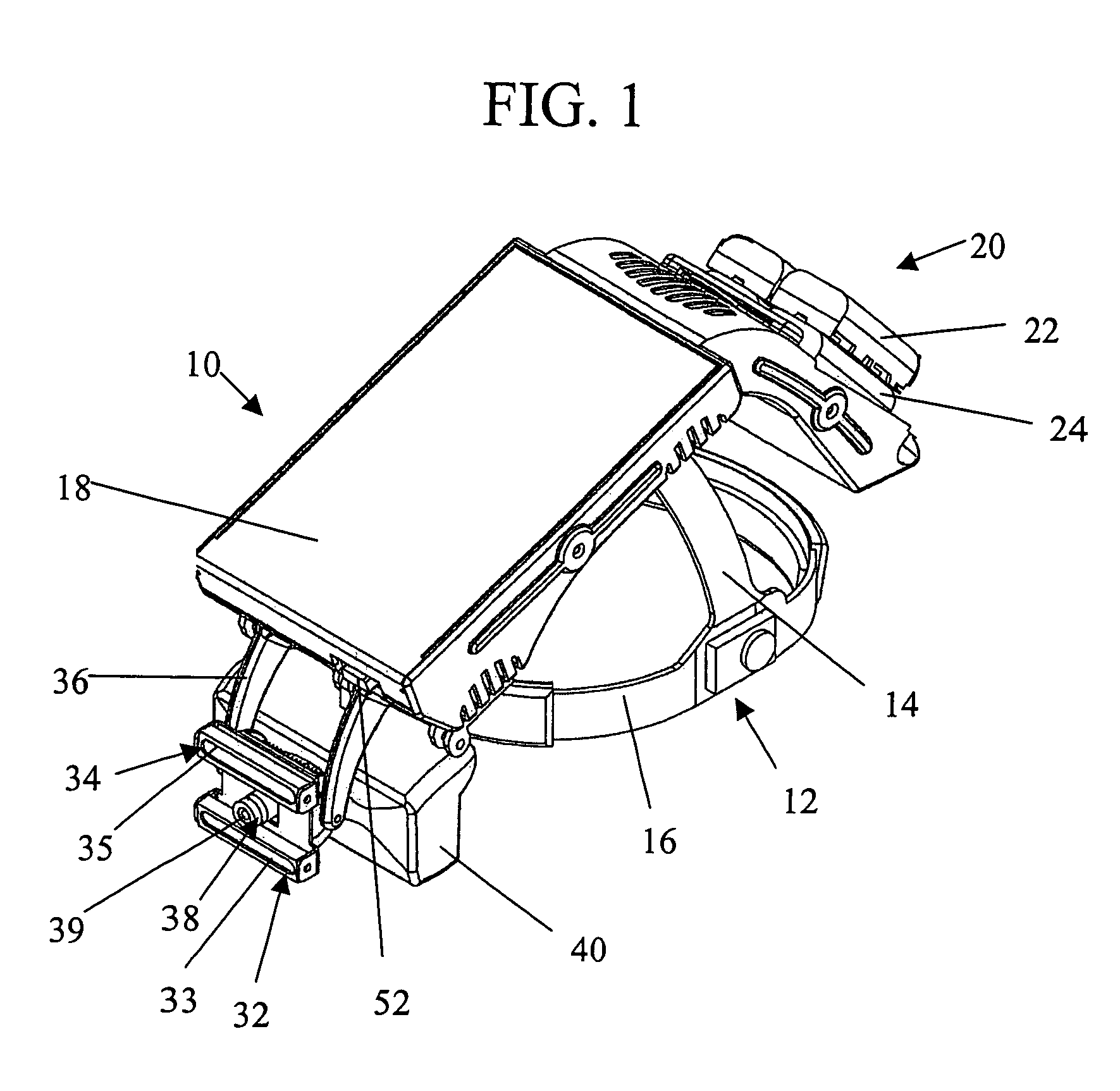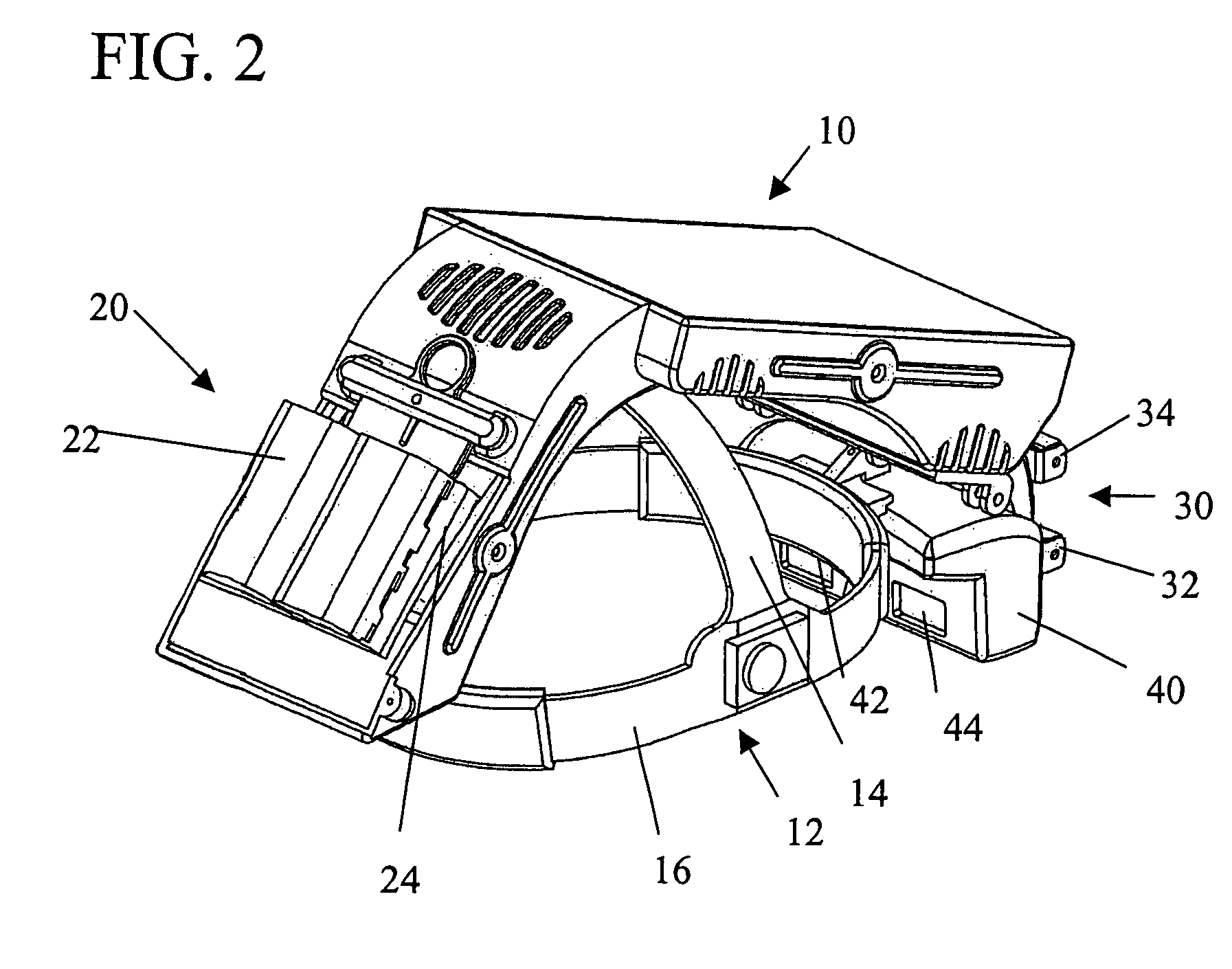System and method for locating and accessing a blood vessel
a blood vessel and imaging system technology, applied in the field of infrared imaging for viewing and accessing subcutaneous blood vessels, can solve the problems of difficult, if not impossible, to locate subcutaneous blood vessels for injection, pain, trauma, etc., and achieve accurate and rapid location, easy to locate, and high quality images.
- Summary
- Abstract
- Description
- Claims
- Application Information
AI Technical Summary
Benefits of technology
Problems solved by technology
Method used
Image
Examples
Embodiment Construction
[0044]FIGS. 1-3 show the preferred embodiment of the imaging system 10 of the present invention. The preferred embodiment of the system 10 includes a headset 12 to which all system components are attached. The preferred headset 12 includes two plastic bands 14,16; a vertical band 14 connected to sides of a horizontal band 16. The vertical band 14, holding most of the system components, generally acts as a load-bearing member, while the horizontal band 16 is adjustable such that it snugly fits about the forehead of the person using the system.
[0045]A pivoting housing 18 is attached to the headband 12. The housing 18 is substantially hollow and is sized to house and protect a headset electronics unit 120 disposed therein. Attached to the housing 18 are a power supply 20, an image capture assembly 30, and an enhanced image display unit 40.
[0046]The power supply 20 for the headset electronics unit 120 preferably includes two rechargeable lithium ion batteries 22, which are connected to ...
PUM
 Login to View More
Login to View More Abstract
Description
Claims
Application Information
 Login to View More
Login to View More - R&D
- Intellectual Property
- Life Sciences
- Materials
- Tech Scout
- Unparalleled Data Quality
- Higher Quality Content
- 60% Fewer Hallucinations
Browse by: Latest US Patents, China's latest patents, Technical Efficacy Thesaurus, Application Domain, Technology Topic, Popular Technical Reports.
© 2025 PatSnap. All rights reserved.Legal|Privacy policy|Modern Slavery Act Transparency Statement|Sitemap|About US| Contact US: help@patsnap.com



